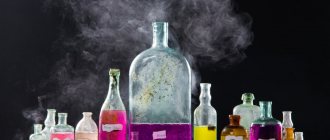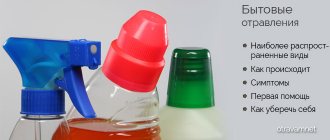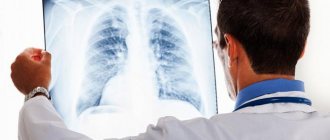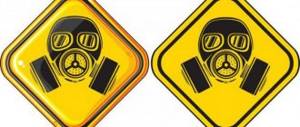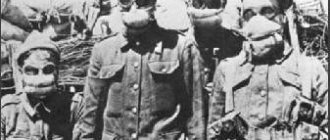| Quinuclidyl-3-benzilate | |
| Are common | |
| Systematic name | Hydroxydiphenylacetic acid 3-quinuclidyl ester |
| Abbreviations | BZ,EA 2277 |
| Chem. formula | C₂₁H₂₃NO₃ |
| Rat. formula | C21H23NO3 |
| Physical properties | |
| Molar mass | 337.41 g/mol |
| Density | 1.33 g/cm³ |
| Thermal properties | |
| T. float. | 166 °C |
| T. kip. | 412 °C |
| T. vsp. | 246 ± 1 °C [1] |
| Classification | |
| Reg. CAS number | 6581-06-2 |
| PubChem | 23056 |
| Reg. EINECS number | 636-245-0 |
| SMILES | |
| ChemSpider | 21577 |
| Data given is based on standard conditions (25 °C, 100 kPa) unless otherwise stated. | |
Quinuclidyl-3-benzilate
(English BZ -
bi-zet
) or
Bi-Zet
[2] - 3-quinuclidyl ester of benzyl acid. Anticholinergic blocker. It is a psychochemical chemical warfare agent [3]. Effective for about 70-80 hours when taken orally 1 mg.
Classification
The most common tactical and physiological classifications of OM.
Tactical classification
- According to saturated vapor pressure (volatility) to:
- unstable (phosgene, hydrocyanic acid);
- persistent (mustard gas, lewisite, );
- poisonous fumes (adamsite, chloroacetophenone).
- By the nature of the impact on manpower:
- lethal (sarin, mustard gas);
- temporarily incapacitating personnel (chloroacetophenone, quinuclidyl-3-benzilate);
- irritants: (adamsite, CS, CR, chloroacetophenone);
- educational: (chloropicrin);
- According to the speed of onset of the damaging effect:
- fast-acting - do not have a period of latent action (sarin, soman, AC, CH, CR);
- slow acting - have a period of latent action (mustard gas, phosgene, lewisite, adamsite);
Physiological classification
According to physiological classification, they are divided into:
- nerve agents (organophosphorus compounds): sarin, soman, tabun, ;
- general toxic agents: hydrocyanic acid; cyanogen chloride;
- blister agent: mustard gas, nitrogen mustard gas, lewisite;
- Agents that irritate the upper respiratory tract or sternites: adamsite, diphenylchloroarsine, diphenylcyanarsine;
- asphyxiating agents: phosgene, diphosgene;
- irritants to the eye membranes or lachrymators: chloropicrin, chloroacetophenone, dibenzoxazepine, chlorobenzalmalondinitrile, bromobenzyl cyanide;
- psychochemical agent: quinuclidyl-3-benzilate (BZ).
Deadly gases: list
As a rule, it is most convenient to compile a list of these toxic substances based on the toxicological effects they have.
- The group of nerve gases is represented by sarin and VX.
- Blisters include lewisite and mustard gas.
- Asphyxiating gases are represented by phosgene, chlorine, diphosgene.
- Tear agents include bromobenzyl cyanide and chloroacetophenone.
- The group of gases of general influence is represented by hydrocyanic acid and cyanogen chloride.
- Irritants include adamsite, CR, CS.
- Psychotomimetic – BZ, LSD-25.
Historical reference
The first combat use of chemical agents took place during the First World War. The French were the first to use them in August 1914: they were 26-mm grenades filled with tear gas (ethyl bromoacetate). But the Allies' supplies of ethyl bromoacetate quickly ran out, and the French administration replaced it with another agent, chloroacetone. In October 1914, German troops fired shells partially filled with a chemical irritant against the British at the Battle of Neuve Chapelle, but the resulting concentration of gas was barely noticeable. In February 1915, French troops began using chlorine rifle grenades. However, this method of combat use of poison gases was very ineffective and did not create a significant concentration of them on enemy positions. The experience of the Kaiser’s troops in the battles near the city of Ypres on April 22, 1915 was much more successful: the 4th German Army launched a counterattack on the Ypres ledge, forestalling the impending offensive of the Anglo-French troops, and occupied most of the ledge. On the first day of fighting, German troops sprayed chlorine from cylinders installed at their forward positions when the wind blew towards the Anglo-French trenches, and inflicted heavy casualties on the enemy, achieving the effect of mass destruction, thanks to which this case of combat use of chemical agents became widely known. (Actually, this is the first experience of quite effective combat use of explosive agents.)
On August 6, 1915, German troops used toxic substances consisting of chlorine and bromine compounds against the defenders of the Russian fortress of Osovets.
In June 1916, chemical weapons were widely used by Russian troops during the Brusilov breakthrough. 76-mm shells with asphyxiating (chloropicrin) and generally toxic (phosgene, vensinite) agent charges have shown their high effectiveness in suppressing enemy artillery batteries (and in this case, the Austro-Hungarians)[1].
The first international legal act prohibiting the military use of chemical agents was the Geneva Protocol of 1925.
Historical information taken from Deyne V. de, Ypres..., Liége, 1925.
Impressed by the combat use of chemical agents in the First World War, many states began feverish preparations for the massive use of chemical agents in future wars. The training included both equipping troops with chemical protection equipment and measures to protect the civilian population. In the 1920s, a number of countries conducted regular training exercises for civilians to deal with chemical attacks. By the beginning of World War 2, most advanced states had a developed chemical defense system. For example, in the USSR the paramilitary organization OSOAVIAKHIM was created.
However, throughout the history of wars and local conflicts after the First World War, the use of military agents was sporadic and, moreover, not widespread. The main reason for this was the relatively low effectiveness of the combat use of explosive agents as a means of mass destruction. The effectiveness of the use of chemical agents in the First World War was largely exaggerated by the psychological shock of their use as a new, previously unknown weapon. The initial lack of means of protection against chemical agents also had a strong impact. In the 1920s, military calculations showed [ source not specified 2131 days
] that the effect of the combat use of ammunition with explosive agents is much lower than the effect of the use of conventional ammunition (the number of enemy soldiers incapacitated, for example, after an hour-long shelling of positions with chemical and high-explosive shells was taken into account). Also, the effect of RH largely depends on factors such as weather (wind direction and strength, air humidity and temperature, atmospheric pressure, and so on). This makes the effect of combat use of explosive agents almost unpredictable. Storing ammunition with chemical agents is technically much more complicated than storing conventional ammunition. Disposal of damaged chemical munitions in the field is impossible. All these factors, plus the massive prevalence of effective means of protection that has become the norm, made the military use of chemical agents difficult and, with rare exceptions, pointless.
But the very presence of chemical weapons in service is a powerful psychological factor influencing the enemy and deterring him from using his chemical weapons, forcing armies to carry out large-scale anti-chemical defense measures. The effectiveness of influence, for all its unpredictability, on an unprepared enemy (and even more so on an unprepared civilian population) remains high. Moreover, the psychological effect exceeds the actual combat effect.
In addition to low combat effectiveness, the main deterrent factor is the sharply negative attitude of society towards the very fact of the combat use of any weapons of mass destruction, including chemical ones.
Literature[ | ]
- GOST R 22.0.05-94. Man-made emergencies. Terms and Definitions.
- GOST R 22.9.05-95. Safety in emergencies. Sets of personal protective equipment for rescuers. General technical requirements.
- GOST 12.1.005-88. SSBT. General sanitary and hygienic requirements for the air in the working area. (MPC for 1307 names of substances).
- GOST 12.1.007-76 (99) Harmful substances. Classification and general safety requirements.
- Temporary list of SDYAV. – M.: ShGO USSR, 1987.
- Directive of the NSH GO USSR No. 2 dated December 20, 1990. List of hazardous chemical products, the presence of which in production or storage exceeding the established volumes requires the development of additional measures to protect the population in the event of an accident with these products.
- Federal Law of June 20, 1997 No. 116-FZ “On Industrial Safety of Hazardous Production Facilities.”
| This article or section contains a list of sources or external references, but the sources of individual statements remain unclear due to a lack of footnotes. Claims that are not supported by sources may be questioned and removed. You can improve the article by providing more accurate citations to your sources. |
Designation
| Substance | US Army code | Soviet army code | Edgewood Arsenal Cipher |
| Mustard gas | H (unrefined) HD (distilled) VV (thickened) | R-5 (Zaykov mustard gas) VR-16 (thickened) | EA 1033 |
| Phosgene | C.G. | R-10 | |
| Lewisite | L | R-43 | EA 1034 |
| Adamsite | DM | R-15 | EA 1277 |
| Sarin | G.B. | R-35 | EA 1208 EA 5823 (binary) |
| Soman | G.D. | R-55 | EA 1210 |
| Herd | GA | R-18 | EA 1205 |
| Quinuclidyl-3-benzilate | BZ | R-78 | EA 2277 |
With a bitter almond scent
Hydrocyanic acid gas also has dual uses: in chemical production and as a poisonous substance. However, its low durability and lack of cumulative properties led to its use as a chemical weapon being discontinued. Another name for this substance is hydrogen cyanide. It has a characteristic aroma of bitter almonds. Causes tissue hypoxia and damage to the central nervous system, acute heart failure and cardiac arrest.
Literature
- Aleksandrov V.N., Emelyanov V.I.
Toxic substances: Textbook / Ed. Dr. Chem. sciences, prof. G. A. Sokolsky. — 2nd ed., revised. and additional - M.: Voenizdat, 1990. - 272 p. — 100,000 copies. — ISBN 5-203-00341-6. - De-Lazari A. N.
Chemical weapons on the fronts of the World War 1914-1918: A brief historical outline / Scientific. ed. and comment. M. V. Supotnitsky. - M.: University Book, 2008. - 268 p. — 300 copies. — ISBN 978-5-9502-0314-5. - Fedorov L. A.
Chemical weapons - war with one’s own people: (tragic Russian experience): In three volumes / Rec.: Dr. geogr. sciences, prof. Bulatov V.I. (Ugra State University), Ph.D. chem. Sciences, Associate Professor L.K. Komogortseva (Bryansk Regional Duma); Democratic Party "Yabloko", Union "For Chemical Safety". - M.: Lesnaya Strana, 2009. - T. I, 392 pp.; vol. II, 240 pp.; vol. III, 384 pp. — ISBN 978-5-91505-012-8.
Classification[ | ]
Hazardous chemicals are usually divided into:
- Emergency chemically hazardous substances (HAS), better known as highly toxic substances (STS);
- Chemical warfare agents (CWA);
- Substances that cause predominantly chronic diseases (CVDs).
In accordance with GOST 12.1.007-76 (99) “Harmful substances. Classification and general safety requirements”, according to the degree of impact on the human body, chemical substances are divided into 4 hazard classes:
| Name | Standard for hazard class | |||
| indicator | 1st | 2nd | 3rd | 4th |
| Maximum permissible concentration (MPC) of harmful substances in the air of the working area, mg/m³ | Less than 0.1 | 0,1-1,0 | 1,1-10,0 | More than 10.0 |
| Average lethal dose when administered into the stomach, mg/kg | Less than 15 | 15-150 | 151-5000 | More than 5000 |
| Average lethal dose when applied to the skin, mg/kg | Less than 100 | 100-500 | 501-2500 | More than 2500 |
| Average lethal concentration in air, mg/m³ | Less than 500 | 500-5000 | 5001-50000 | More than 50000 |
| Inhalation Poisoning Possibility Quotient (POICO) | More than 300 | 300-30 | 29-3 | Less than 3 |
| Acute zone | Less than 6.0 | 6,0-18,0 | 18,1-54,0 | More than 54.0 |
| Chronic zone | More than 10.0 | 10,0-5,0 | 4,9-2,5 | Less than 2.5 |
- Class 1, extremely dangerous;
- class 2, highly dangerous;
- Class 3, moderately hazardous;
- Class 4, low-hazard.
In accordance with Federal Law dated June 20, 1997 No. 116-FZ “On Industrial Safety of Hazardous Production Facilities,” chemical substances are classified as follows:
| Index | Highly toxic substances | Toxic substances | Substances that pose a danger to the natural environment |
| Average lethal dose when administered into the stomach, mg/kg | no more than 15 | 15-200 | |
| Average lethal dose when applied to the skin, mg/kg | no more than 50 | 50-400 | |
| Average lethal concentration in air, mg/m³ | no more than 0.5 | 0,5-2 | |
| Average lethal dose during inhalation exposure to fish for 96 hours, mg/l | no more than 10 | ||
| Average concentration of poison that causes a certain effect when exposed to daphnia for 48 hours, mg/l | no more than 10 | ||
| Average inhibitory concentration when exposed to algae for 72 hours, mg/l | no more than 10 |
Currently, the Technical Regulations “On the Safety of Chemical Products” are being developed, which will have its own classification of chemical products that have acute toxicity.
Poison gas GB
This substance is better known as sarin. In September 2013, the UN confirmed that a chemical weapons attack using specially designed missiles that released sarin gas against rebels in a suburb of the Syrian capital had occurred a month earlier. UN Secretary-General Ban Ki-moon said it was the most significant confirmed use of chemical weapons against civilians since Saddam Hussein used them in Halabja in 1988.
Sarin gas is a volatile but toxic nerve agent created from phosphorus. One drop the size of a pinhead is enough to quickly kill an adult. This colorless, odorless liquid retains its state of aggregation at room temperature, but quickly evaporates when heated. Once released, it spreads rapidly in the environment. As with VX, symptoms include headache, drooling and tearing followed by gradual muscle paralysis and possible death.
Sarin was developed in 1938 in Germany while scientists were researching pesticides. The Aum Shinrikyo cult used it in 1995 on the Tokyo subway. Although the attack caused widespread panic, it only killed 13 people because the agent was sprayed in liquid form. To maximize losses, sarin must not only be a gas, but its particles must be small enough to be easily absorbed through the lining of the lungs, but heavy enough so that they are not exhaled.
Diagnosis and treatment of intoxication
It is possible to accurately establish that the cause of poisoning was psychochemical substances through special examinations. The victim is sent for blood and urine examination. Sometimes saliva is taken for testing. The doctor conducts an external examination of the person, communicates with relatives and people who delivered the poisoned person.
If there is a clear manifestation of nerve damage, the victim is put in a straitjacket to avoid accidents.
You will like the article: “ The most deadly poisons for humans .”
If signs of poisoning by psychochemical compounds are detected, the person is given a suitable antidote that neutralizes the effect of the poison. Subsequently, the necessary medications are selected. Treatment is carried out until complete restoration of vital functions.
In serious situations, the victim may need to stay in a hospital or psychiatric hospital.
Symptoms of poisoning
When toxic substances enter the body, characteristic signs are noted. Every person is recommended to know how an overdose of psychochemical compounds manifests itself.
Signs:
- Memory loss, a person does not even remember his name.
- Irritability, fussiness appears, and speech is impaired.
- Lack of orientation to the area, the victim constantly tries to get away.
- There is delusion, hallucinations, and the appearance of aggression.
- There is noise in the ears and a feeling of hearing loss.
- There is a loss of coordination, movements become sweeping and uncontrolled.
- The skin and mucous membranes become dry.
- Blood pressure changes sharply.
- Allergic reactions may develop on the skin.
If mild poisoning is diagnosed, then the symptoms are mild and disappear after twelve hours. At the middle stage of intoxication, the signs are more pronounced, the nervous system suffers more.
If the poisoning is severe, then the victim experiences serious mental confusion and disturbances in the functioning of the nervous system.

